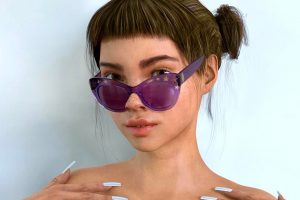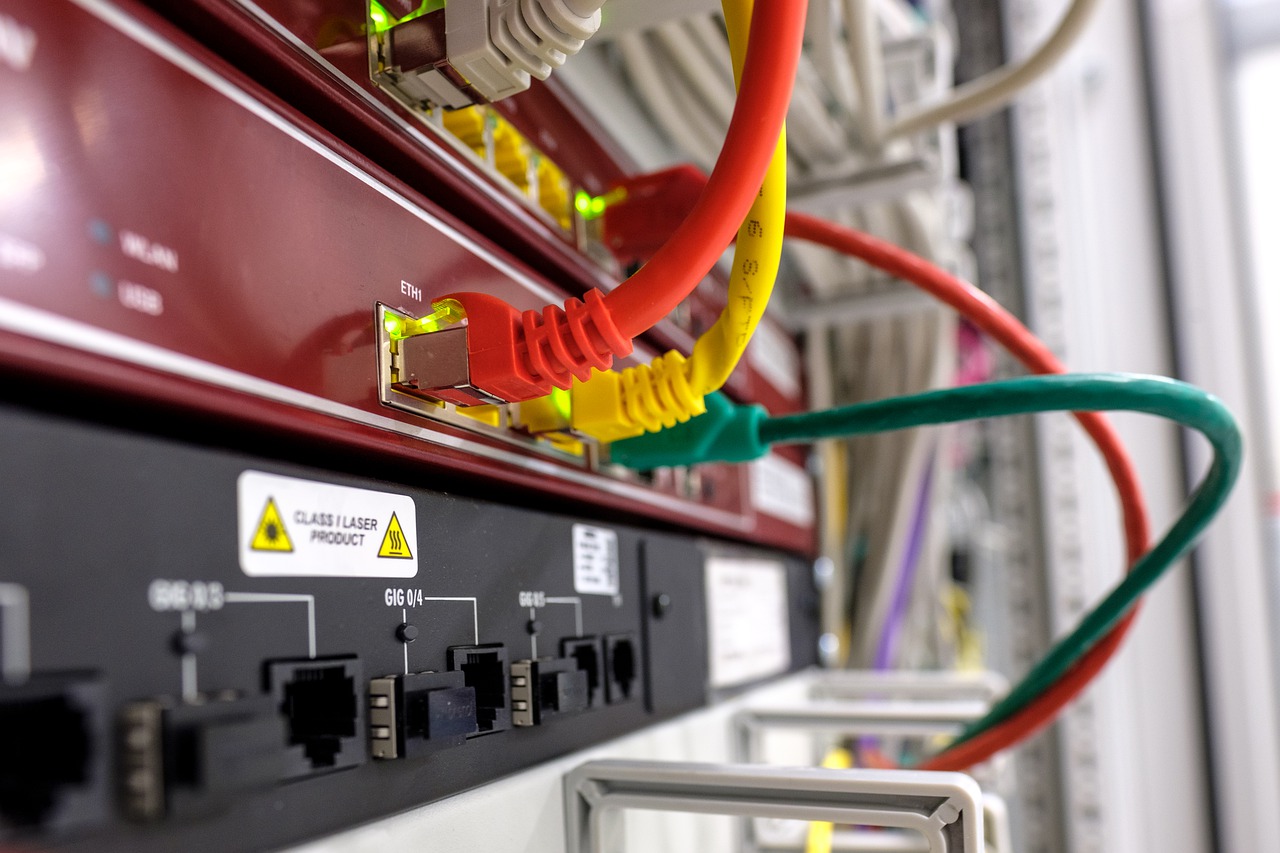Believe it or not but AI influencers exist and in 2018 this rather unexplored niche had an impressive growth. Whether you’ve heard of AI influencers before and are curious to learn more or if this’s the first time you’ve heard of the concept, you’ve got it right. AI influencers are starting to take a larger part in influencer marketing, where there are many benefits to working with AI influencers, but you miss the most important part that has made influencer marketing so successful – the relationship and trust.
Contents
What is an AI influencer?
The concept behind AI influencers has been around since 2016 and in some cases even longer than that. However, it took until 2017 before the popularity of AI influencers really started to pick up and according to most forecasts, 2019 will be an even bigger year for the trend. Just as the name reveals, an AI influencer is based on an Artificial Intelligence. This means that these influencers do not exist in our physical world but that they were created and controlled via a computer, they are robots on social media with human followers.
Note that there are other people who are sometimes called AI influencers, then these are often leading developers and experts in AI and these are not the kind of influencers we are talking about today.
At first glance, it may seem strange to use robots for influencer marketing, but the truth is that AI influencers are already a hot trend that several of the world’s largest brands have used with good results. It is above all in fashion and lifestyle that the interest is greatest for this type of digital model, but the interest is spreading rapidly. So far, AI influencers are most popular on Instagram as it is easier to create compelling content with images. For example, Twitter and Facebook are not very popular for AI influencers, as those platforms require more of a human contact. Instagram on the other hand is perfect as you can easily publish an animated image or video with a well-written caption and thus attract attention.
With that said, several of our biggest AI influencers have begun to take YouTube by storm, proving that digital models are suitable for more than just Instagram ads. One of the most interesting aspects about the rise of AI influencers is that they have so many followers. As you will read further down the page, today there are AI influencers with millions of followers and as far as we understand it, all these followers are aware that AI influencers are only used for marketing. In other words, we have noticed a shift where the public, who previously did everything they could to avoid advertising on TV and online ads, now actively seek out and follow marketing channels on social media. In turn, this shift helps to increase the brands’ ‘reach’ while maximizing their opportunities to market to a larger and committed target group.
Some of the industry’s biggest AI influencers and their portfolios
To better understand how AI influencers work and what role they play in society, we thought we would take a closer look at some of the most successful examples. As I said, AI influencers have been most popular in fashion where everything from international fashion houses to smaller streetwear brands have used them, although lately the industry has started to see greater potential and that basically anything can be marketed with the help of digital influencers.
Lil Miquela
The biggest and most successful AI influencer today goes by the name Miquela Sousa, or Lil Miquela. She is 100% programmed and has more than 1.5 million followers on Instagram, in addition she is one of the influencers most used for marketing. In 2018, for example, Lil Miquela took over Prada’s Instagram account and she carried out campaigns for UGG’s and many more. As the finishing touch, she got a place in the September issue of Vogue. This in turn helped spread the idea behind AI influencers to the rest of the world.
As if that were not enough, Miquela has participated in ads where she is animated together with real models in an exciting mix of reality and the digital world. In addition, Lil Miquela has actively worked with several social topics and she is an outspoken supporter of Black Lives Matter. Behind Lil Miquela is a mysterious company based in LA and they have driven Miquela’s Instagram account to a point where she gets an almost incomprehensibly high level of genuine commitment. In addition to Lil Miquela, there are a plethora of other AI influencers and to make the situation even more unique, many of them have connections to each other and are considered “friends” on Instagram.
Ronnie Blawko
Blawko22 is an AI influencer and Instagram model who calls himself a sex symbol and who always wears a face mask that hides half his face. Blawko22 is best known as Lil Miquela’s good friend and he often plays the role of her sidekick. Lately, Miquela and Blawko have done everything from representing brands to eating tacos together, all in a completely digital world of course.
To make it all even more bizarre, Blawko is with another AI influencer named Bermuda and their relationship is far from perfect, which you can often read about on Instagram. At least a quarter of all Blawko’s posts on Instagram are about his relationship with Bermuda and cover both the good and the bad.
Lil Wavi
Another immensely popular AI influencer with a large fan base and more than 11k followers on Instagram is Lil Wavi. In addition to Instagram, much of Lil Wavi’s focus is on YouTube.
According to its creators, Lil Wavi is 20 years old and he has become known for his obscene facial tattoos and his taste for expensive clothes. Lil Wavi can often be seen in clothes from Gucci and Prada, although his portfolio of previous projects is not as extensive as Lil Miquelas or Blawkos.
Are AI influencers better than real influencers?
As you can probably understand, these AI influencers and digital models have stirred the pot properly and divided people into two camps.
On the one hand, we find the people who are 100% for these influencers and who love development. It is often people who believe AI will be an important part of our future society and who are early adapters.
On the other hand, there are people who are a little more cautious when it comes to technological development, people who can see the benefits of AI but who may be discouraged from the high level of commitment that these robots create.
AI influencers have given good results and driven sales for several brands, where the industry will continue to hire them to market their products.
What does the future of AI influencers look like?
The question we all now ask is whether AI influencers really are the future or whether it is a trend that will pass. Given that AI influencers and digital models are only increasing in popularity on both Instagram and YouTube, we are convinced that they will remain for a long time. In addition, there are several major brands planning to use AI influencers in 2019 and we can expect a lot of activity. However, we must not forget that these are robots and digital creations that in many ways go against the foundation on which influencer marketing stands.
The reason why influencer marketing has become as big as it is today was because the concept allowed “ordinary” people to market to other “ordinary” people. Today, followers have a personal and humane relationship with the influencers they follow and that is exactly why influencer marketing works. So far, this is something that AIs do not have the capacity to do and their ads therefore remain impersonal to a certain level. We absolutely believe that AI influencers will grow, however, they will not achieve complete dominance.
Last but not least, we suspect that there will soon be an interesting development around those behind these AI. Right now, it is technology companies that specialize in AI and CGI that are behind these digital models. But what stops brands from creating their own influencers?
There is no doubt that AI influencers are an industry with enormous potential and something that brands should consider including in their campaigns. AI influencers will also allow us to better understand how we humans can act, be influenced by and control robots in our daily lives, something that will most likely have a major impact on our future.
Who was the first AI influencer?
The first AI influencer is generally considered to be Miquela Sousa, better known by her online persona Lil Miquela. She was created by the Los Angeles-based startup Brud in 2016, and she began posting on Instagram in April of that year. Lil Miquela quickly gained a large following by posting about fashion, music, and other topics. Her posts have since been featured on several reputable fashion magazines and on social media platforms. She is considered as the first AI influencer because she is not a real person, but rather a virtual character designed by a team of developers, graphic designers, and animators. Lil Miquela has since been joined by other AI influencers, such as Shudu, Bermuda, and many others, who all have been created with the aim of promoting fashion, lifestyle and entertainment.
Who is the most popular virtual influencer?
There are several virtual influencers that have gained popularity in recent years, but one of the most popular is Lil Miquela, also known as Miquela Sousa. She is a virtual character created by the Los Angeles-based startup Brud, and is considered one of the first AI influencers in the world.
She has a large following on Instagram, Twitter, and TikTok, and has collaborated with a number of brands and designers. She also has a large following on TikTok where she creates lip-sync, dance and comedy videos.
Another popular virtual influencer is Shudu, is a virtual model created by photographer Cameron-James Wilson, and has been featured in a number of campaigns and editorials.
Bermuda, is another virtual model who is considered as the first virtual African model, and is also very popular on social media platforms.
Virtual influencers have gained popularity in recent years, many new virtual influencers have been created in different niches and industries, and they continue to gain popularity and attention.
Are AI influencers actually AI?
AI influencers are not truly AI, they are virtual characters created by a team of developers, graphic designers, and animators. They are not sentient beings, but rather computer-generated images that are programmed to perform certain actions and responses. They are not capable of learning or thinking on their own.
AI influencers are typically created using 3D modeling software and animation tools, and are programmed to interact with social media platforms in a variety of ways. They can be programmed to post content, engage with followers, and even respond to comments and messages.
While they are not truly AI, they are designed to mimic the behavior and actions of a real person, and their creators use AI technologies such as machine learning and natural language processing to make their interactions with users more natural and lifelike.
It’s important to note that AI influencers are not real people, they are virtual characters that are controlled by a team of developers and designers, and their content is created by humans. They are not capable of independent thought or decision-making, and their interactions with users are limited to pre-programmed responses.







